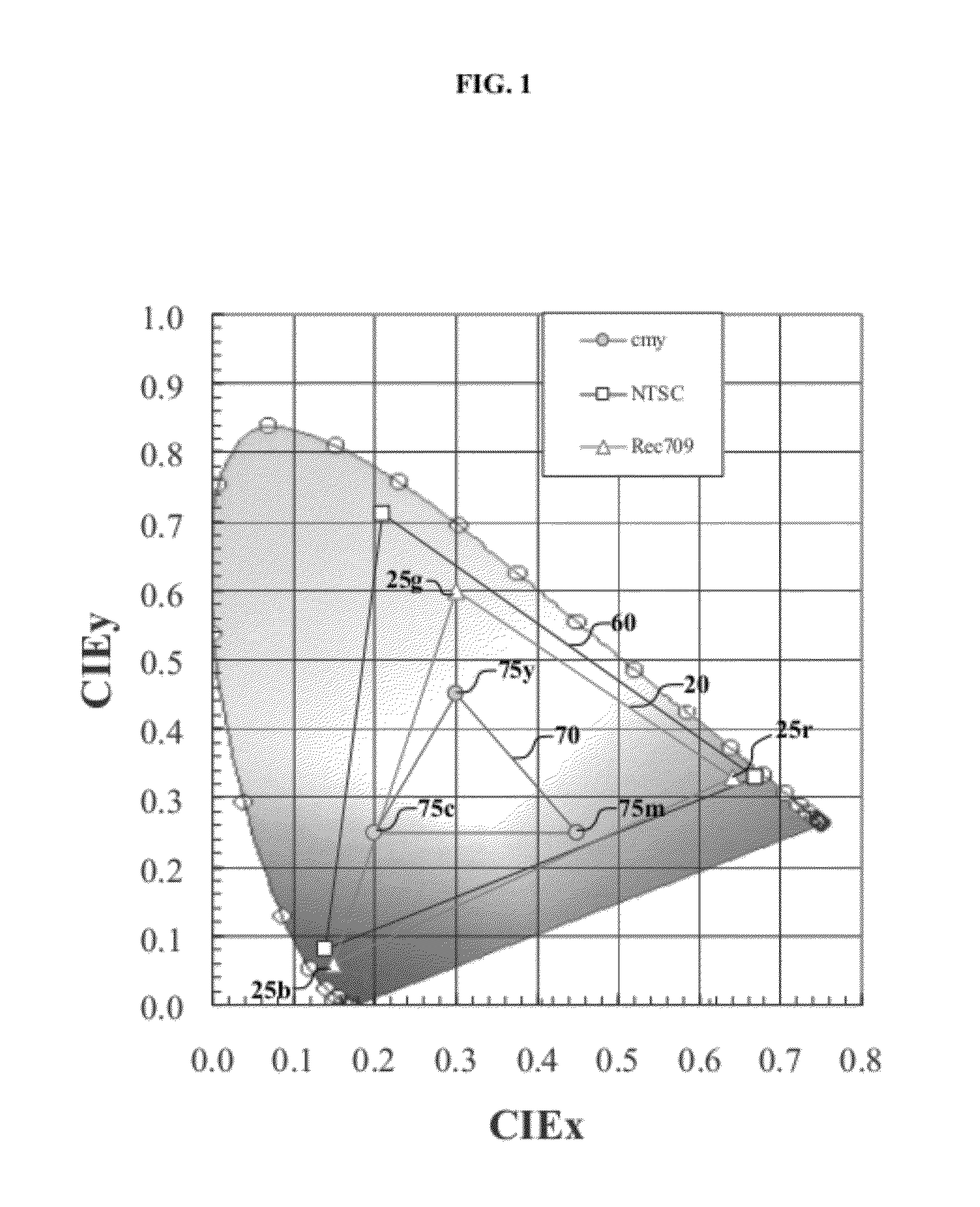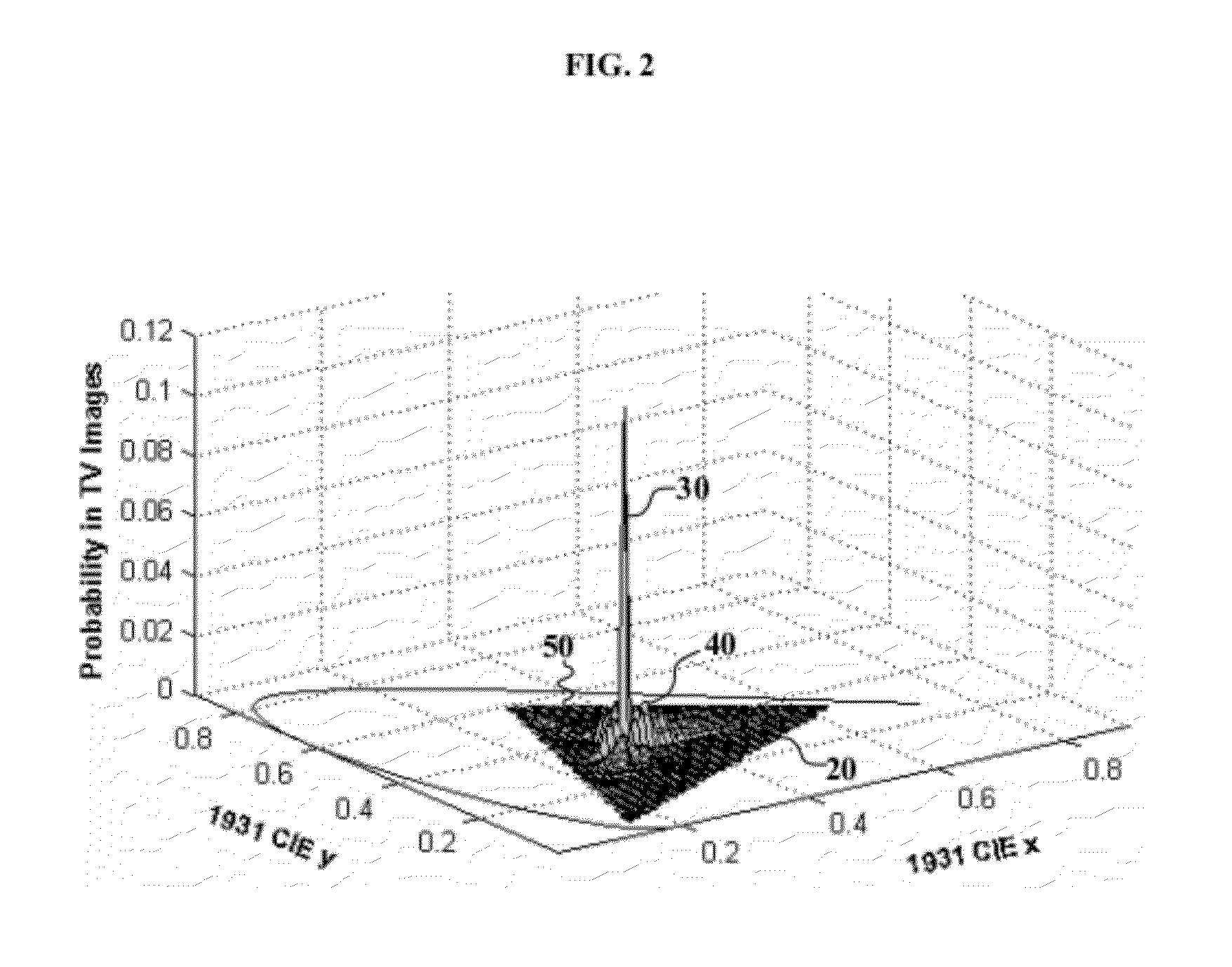OLED display with reduced power consumption
a technology of power consumption and oled display, which is applied in the direction of cathode-ray tube indicators, instruments, spectral modifiers, etc., can solve the problems of reducing the radiant efficiency to approximately 13 of the radiant efficiency, reducing and reducing the efficiency of the actual use so as to reduce the power consumption of the white oled display. , to achieve the effect of reducing th
- Summary
- Abstract
- Description
- Claims
- Application Information
AI Technical Summary
Benefits of technology
Problems solved by technology
Method used
Image
Examples
Embodiment Construction
[0037]The term “OLED device” is used in its art-recognized meaning of a display device comprising organic light-emitting diodes as pixels or subpixels. It can mean a device having a single pixel or subpixel. Each light-emitting unit includes at least a hole-transporting layer, a light-emitting layer, and an electron-transporting layer. Multiple light-emitting units can be separated by intermediate connectors. The term “OLED display” as used herein means an OLED device comprising a plurality of subpixels which can emit light of different colors. A color OLED device emits light of at least one color. The term “multicolor” is employed to describe a display panel that is capable of emitting light of a different hue in different areas. In particular, it is employed to describe a display panel that is capable of displaying images of different colors. These areas are not necessarily contiguous. The term “full color” is employed to describe multicolor display panels that are capable of emit...
PUM
 Login to View More
Login to View More Abstract
Description
Claims
Application Information
 Login to View More
Login to View More - R&D
- Intellectual Property
- Life Sciences
- Materials
- Tech Scout
- Unparalleled Data Quality
- Higher Quality Content
- 60% Fewer Hallucinations
Browse by: Latest US Patents, China's latest patents, Technical Efficacy Thesaurus, Application Domain, Technology Topic, Popular Technical Reports.
© 2025 PatSnap. All rights reserved.Legal|Privacy policy|Modern Slavery Act Transparency Statement|Sitemap|About US| Contact US: help@patsnap.com



